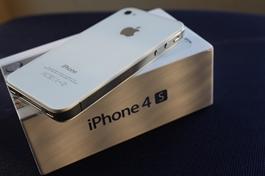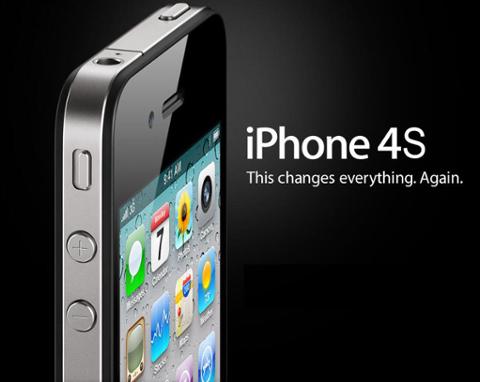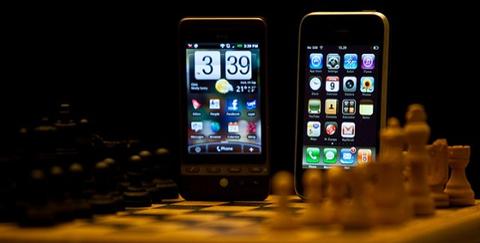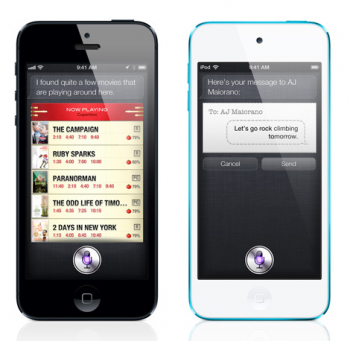
The
iPhone 4S is a lackluster product in the eyes of many Apple fans and industry watchers. Before its launch, the rumor mill buzzed over the possibility that it would offer drastic improvements over its predecessor, including a major redesign, LTE connectivity, a larger screen and a new home button. Despite not living up to the hype, Apple managed to sell 4 million of the phones in its first three days. Considering that the 4S wasn't much of an upgrade -- sporting a faster chip and a better camera -- it was an incredible feat. Of course, there was also the personal assistant Siri, the main differentiator between the 4S and the previous two generations of iPhones. (The death of Steve Jobs could have been a factor in the initial response, too, as emotional Apple fans flocked to buy the last device unveiled during his life.) But to me, all of those were simply contributing factors. I think the main driver in the buying spree was the gap between the release of the iPhone 4 and the 4S -- it was way too long. Despite the incremental upgrade, the 4S was still one of the best options consumers had at the time. Now, a year later, Android devices like Samsung's Galaxy S III and the HTC One X are setting the smartphone bar higher than it's ever been. And they're putting pressure on Apple.
Getting Closer and Closer
For example, iPhone users long for a larger screen of the sort offered by Samsung's Galaxy Nexus. Then there's the Galaxy S III, also by Samsung. It's not just another smartphone running on an old uninspiring version of Android. It includes a host of small, thoughtful features that truly enhance user experience. Also, popular apps that used to be available only on iOS are now in Google Play as well, including Instagram, Flipboard and Nike+Running. Since the iPhone doesn't have as much advantage anymore, Apple has to step up. If it's going to, iOS 5 doesn't show it. While it offers a number of useful new things, most of them are simply things that make sense, not drastic, innovative features. The wildcard now is the hardware. Among others things, fans expect the iPhone 5 to include NFC, LTE, a larger screen and a
smaller dock connector. But all of these are already available on Android devices. They're hardly impressive, just logical hardware upgrades. With so many companies competing to make exceptional mobile devices, we're spoiled with choices and have begun to take great mobile technologies for granted. In other words, it's harder than ever to impress consumers. For the iPhone 5 to grab us, it will have to bring new, useful, disrupting and enerally unexpected features to the market. The original iPhone and Retina display are both good examples of the impact it could have. Today, it takes innovations like Senseg's Feel technology, incredibly long battery life or a super-rugged chassis that doesn't sacrifice aesthetic and increase size to truly stand out.
What will the iPhone 5 need to offer take to impress you? Tell me in the comments below. Image:
Julia Lu
 The iPhone 4S is a lackluster product in the eyes of many Apple fans and industry watchers. Before its launch, the rumor mill buzzed over the possibility that it would offer drastic improvements over its predecessor, including a major redesign, LTE connectivity, a larger screen and a new home button. Despite not living up to the hype, Apple managed to sell 4 million of the phones in its first three days. Considering that the 4S wasn't much of an upgrade -- sporting a faster chip and a better camera -- it was an incredible feat. Of course, there was also the personal assistant Siri, the main differentiator between the 4S and the previous two generations of iPhones. (The death of Steve Jobs could have been a factor in the initial response, too, as emotional Apple fans flocked to buy the last device unveiled during his life.) But to me, all of those were simply contributing factors. I think the main driver in the buying spree was the gap between the release of the iPhone 4 and the 4S -- it was way too long. Despite the incremental upgrade, the 4S was still one of the best options consumers had at the time. Now, a year later, Android devices like Samsung's Galaxy S III and the HTC One X are setting the smartphone bar higher than it's ever been. And they're putting pressure on Apple.
The iPhone 4S is a lackluster product in the eyes of many Apple fans and industry watchers. Before its launch, the rumor mill buzzed over the possibility that it would offer drastic improvements over its predecessor, including a major redesign, LTE connectivity, a larger screen and a new home button. Despite not living up to the hype, Apple managed to sell 4 million of the phones in its first three days. Considering that the 4S wasn't much of an upgrade -- sporting a faster chip and a better camera -- it was an incredible feat. Of course, there was also the personal assistant Siri, the main differentiator between the 4S and the previous two generations of iPhones. (The death of Steve Jobs could have been a factor in the initial response, too, as emotional Apple fans flocked to buy the last device unveiled during his life.) But to me, all of those were simply contributing factors. I think the main driver in the buying spree was the gap between the release of the iPhone 4 and the 4S -- it was way too long. Despite the incremental upgrade, the 4S was still one of the best options consumers had at the time. Now, a year later, Android devices like Samsung's Galaxy S III and the HTC One X are setting the smartphone bar higher than it's ever been. And they're putting pressure on Apple.
 The iPhone 4S is a lackluster product in the eyes of many Apple fans and industry watchers. Before its launch, the rumor mill buzzed over the possibility that it would offer drastic improvements over its predecessor, including a major redesign, LTE connectivity, a larger screen and a new home button. Despite not living up to the hype, Apple managed to sell 4 million of the phones in its first three days. Considering that the 4S wasn't much of an upgrade -- sporting a faster chip and a better camera -- it was an incredible feat. Of course, there was also the personal assistant Siri, the main differentiator between the 4S and the previous two generations of iPhones. (The death of Steve Jobs could have been a factor in the initial response, too, as emotional Apple fans flocked to buy the last device unveiled during his life.) But to me, all of those were simply contributing factors. I think the main driver in the buying spree was the gap between the release of the iPhone 4 and the 4S -- it was way too long. Despite the incremental upgrade, the 4S was still one of the best options consumers had at the time. Now, a year later, Android devices like Samsung's Galaxy S III and the HTC One X are setting the smartphone bar higher than it's ever been. And they're putting pressure on Apple.
The iPhone 4S is a lackluster product in the eyes of many Apple fans and industry watchers. Before its launch, the rumor mill buzzed over the possibility that it would offer drastic improvements over its predecessor, including a major redesign, LTE connectivity, a larger screen and a new home button. Despite not living up to the hype, Apple managed to sell 4 million of the phones in its first three days. Considering that the 4S wasn't much of an upgrade -- sporting a faster chip and a better camera -- it was an incredible feat. Of course, there was also the personal assistant Siri, the main differentiator between the 4S and the previous two generations of iPhones. (The death of Steve Jobs could have been a factor in the initial response, too, as emotional Apple fans flocked to buy the last device unveiled during his life.) But to me, all of those were simply contributing factors. I think the main driver in the buying spree was the gap between the release of the iPhone 4 and the 4S -- it was way too long. Despite the incremental upgrade, the 4S was still one of the best options consumers had at the time. Now, a year later, Android devices like Samsung's Galaxy S III and the HTC One X are setting the smartphone bar higher than it's ever been. And they're putting pressure on Apple.



